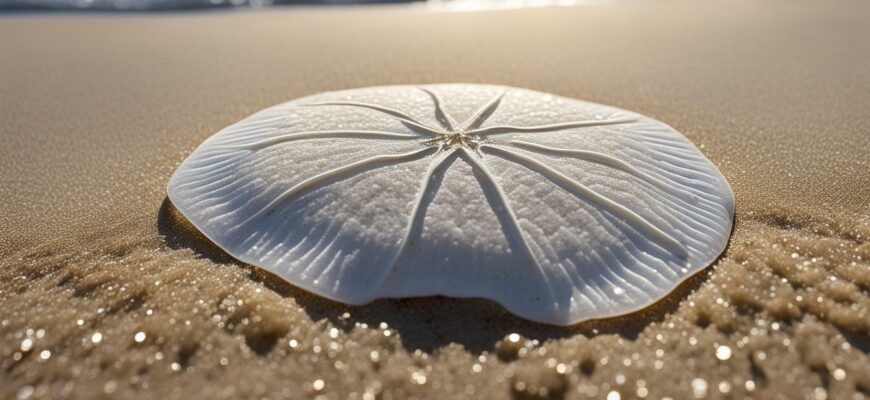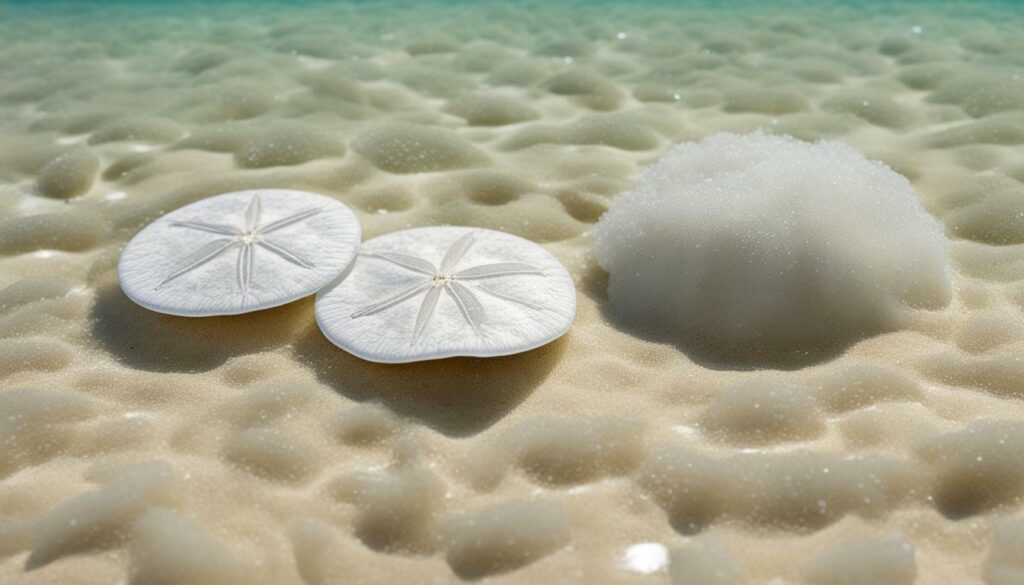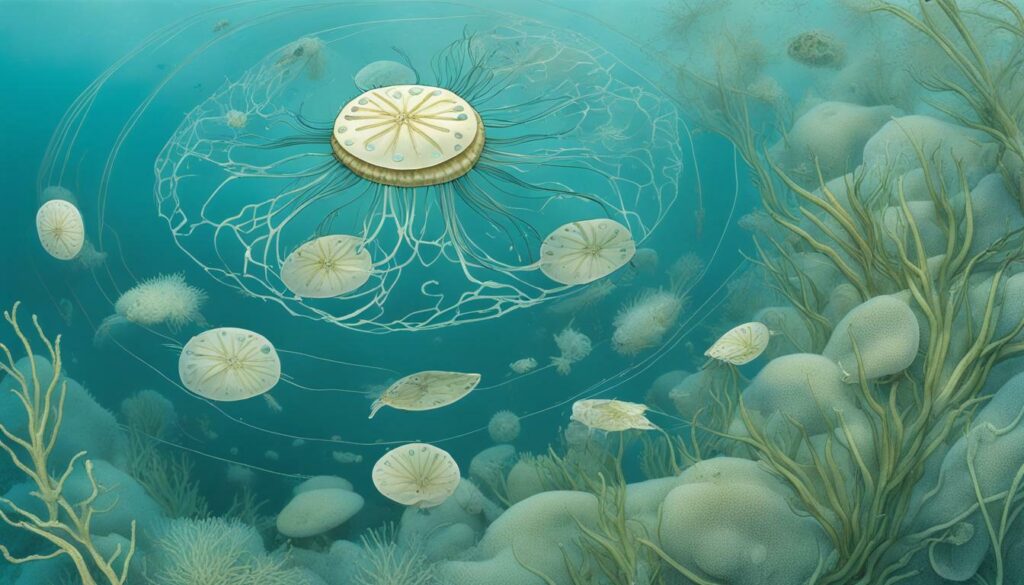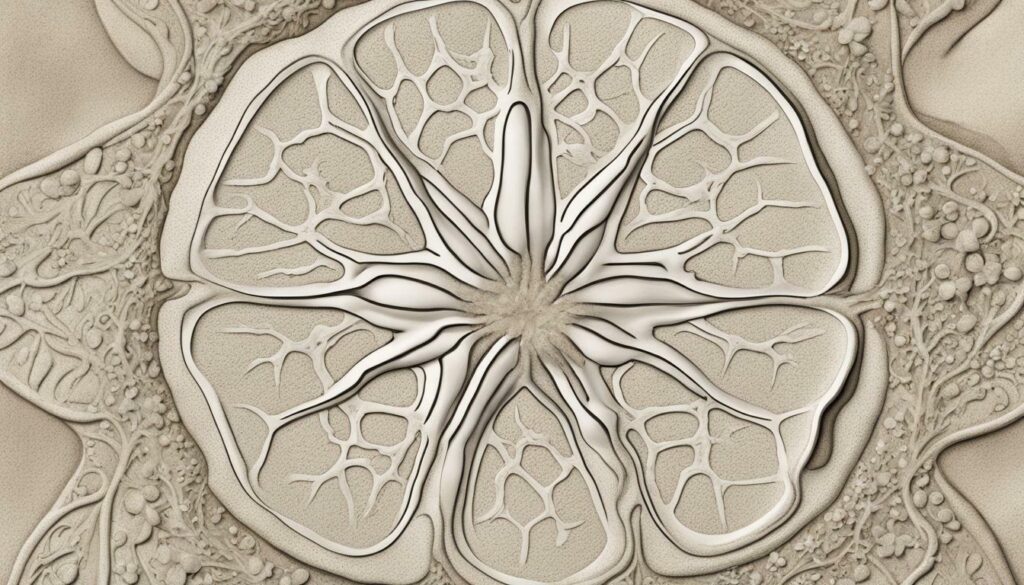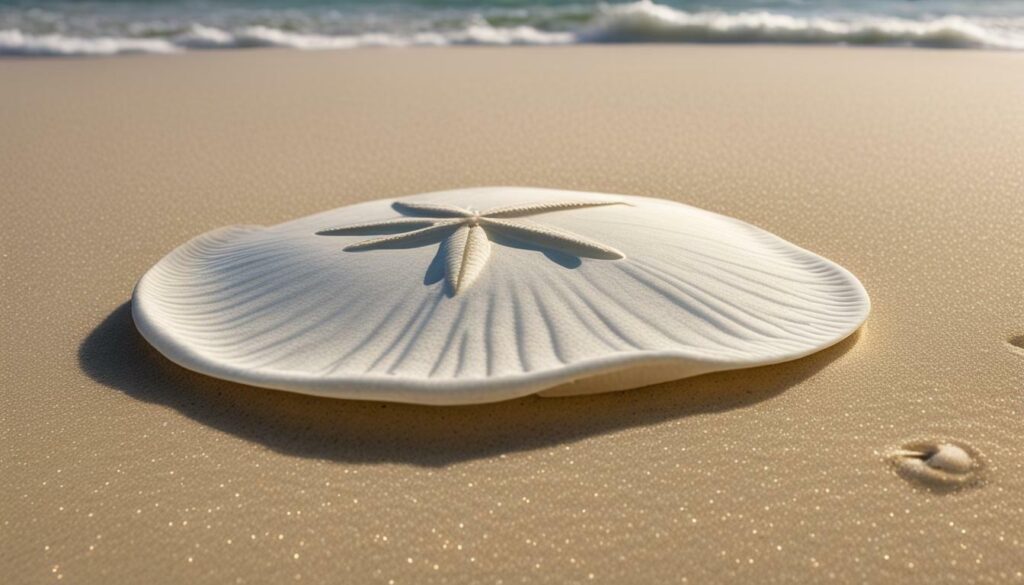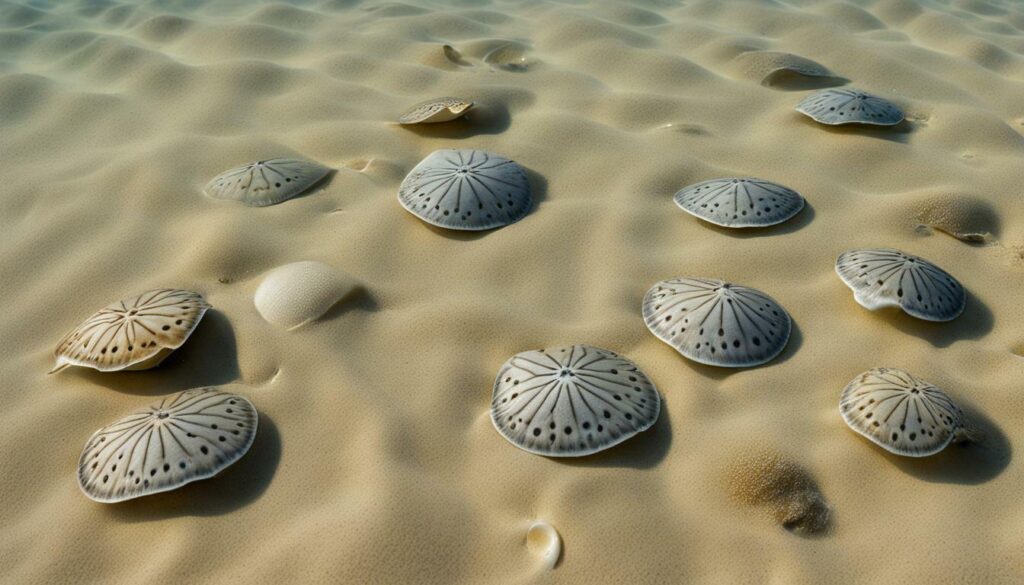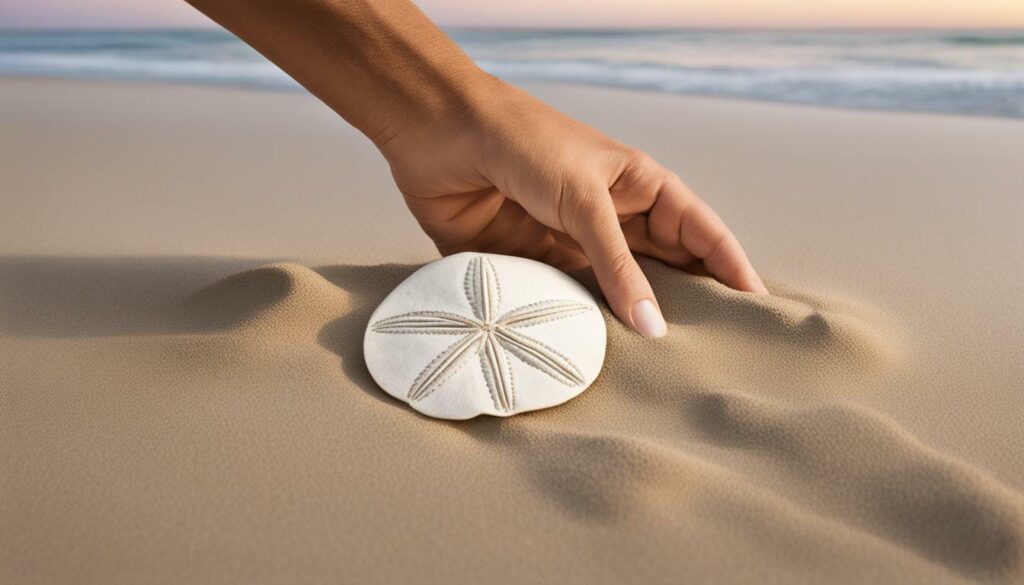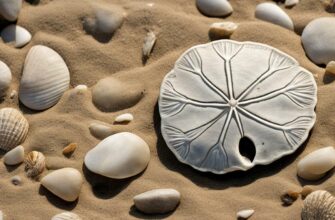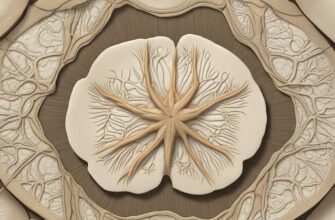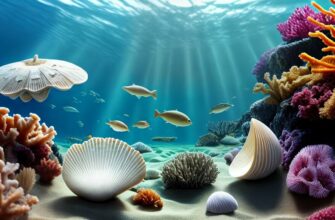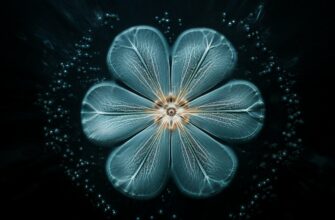Have you ever come across a sand dollar shell while strolling along the beach and wondered about the life cycle of this fascinating creature? The sand dollar’s life story is a mystery waiting to be unveiled, from its reproductive process to its growth and adaptations for survival.
In this article, we will take you on a journey through the life cycle of a sand dollar, exploring its anatomy, habitat, feeding habits, predators, and the impact of human activities on their survival.
- Key Takeaways:
- The Beginning: Sand Dollar Reproduction
- The Reproductive Process
- From Fertilization to Larvae: Early Development
- Metamorphosis: Transformation into a Sand Dollar
- Anatomy of a Sand Dollar: Structure and Features
- The Stages of Life: Maturation and Growth
- A Sea of Habitat: Where Sand Dollars Live
- Adaptations for Survival: How Sand Dollars Thrive
- Tube Feet
- Burrowing
- Coloration
- Feeding and Predators: Sand Dollars in the Food Chain
- Environmental Impact: Human Interaction with Sand Dollars
- The Mysterious End: Decoding Sand Dollar Mortality
- Conclusion
- FAQ
- Q: What is the life cycle of a sand dollar?
- Q: How do sand dollars reproduce?
- Q: What are the early stages of a sand dollar’s life?
- Q: How does metamorphosis occur in sand dollars?
- Q: What are the unique features of a sand dollar’s anatomy?
- Q: What are the different stages of a sand dollar’s life?
- Q: Where do sand dollars live?
- Q: How do sand dollars adapt to their environment?
- Q: What do sand dollars eat, and what are their predators?
- Q: What is the impact of human activities on sand dollars?
- Q: What factors contribute to sand dollar mortality?
Key Takeaways:
- The sand dollar’s life cycle is a fascinating mystery waiting to be unveiled.
- We will explore the sand dollar’s reproductive process, growth, adaptations, and habitat.
- We will also examine their feeding habits, predators, and the impact of human activities on their survival.
The Beginning: Sand Dollar Reproduction
The life cycle of a sand dollar starts with reproduction. Sand dollars are sexually dimorphic, which means that there are males and females. The males release sperm, which fertilizes the eggs released by the females. This process usually happens during the spring and summer months when water temperatures are warmer.
Once the eggs are fertilized, they develop into free-swimming larvae after a few days. Sand dollar larvae are part of the planktonic community and are carried by ocean currents. They have tiny hairs called cilia, which they use to move around in the water. The larvae feed on phytoplankton until they reach maturity.
The Reproductive Process
The mating habits of sand dollars are not well documented, but scientists believe that they engage in external fertilization. This means that the males and females release their reproductive cells into the water, where they mix and fertilize.
The release of gametes typically happens at night during a full moon, which increases the chances of successful fertilization due to the higher tides and currents.
| Males: | Release sperm into the water |
|---|---|
| Females: | Release eggs into the water |
| External Fertilization: | Occurs when the gametes mix and fertilize in the water |
The process of external fertilization ensures genetic diversity among sand dollar populations. It also allows for more successful fertilization since multiple males can fertilize the eggs of a single female, which increases the chances of survival for the offspring.
“The males release sperm, which fertilizes the eggs released by the females.”
From Fertilization to Larvae: Early Development
As soon as the sand dollar eggs are fertilized, the larvae embark on a journey of growth and development that is truly fascinating. Over the course of several weeks, the larvae grow and transform in preparation for life as a sand dollar.
During the first few days of development, the larvae feed on the yolk sac that is attached to their bodies. As they grow, they develop a more complex digestive system and begin to feed on plankton and other small organisms in the water.
| Week | Developmental Stage |
|---|---|
| 1-2 | The larvae grow and develop their first set of arms, which will later become their tube feet. |
| 2-3 | The larvae continue to grow and develop more arms. They also begin to grow their calcareous plates, which will form the distinctive skeleton of the sand dollar. |
By the end of the larval stage, the sand dollar has developed a fully formed skeleton and has grown its tube feet and spines. At this point, the sand dollar settles on the ocean floor and begins its life as a bottom-dwelling echinoderm.
Although the early stages of development may seem simple, the intricate details of the sand dollar’s growth and transformation reveal the complex nature of life in the ocean. Through their unique adaptations and fascinating life cycle, sand dollars continue to amaze and inspire those who study them.
Metamorphosis: Transformation into a Sand Dollar
As the sand dollar larvae develop, they undergo a metamorphosis process to transform into fully formed sand dollars. This process can take several weeks to months, depending on the species and environmental conditions.
During metamorphosis, the sand dollar larvae undergo significant changes in their physical appearance and behavior. They begin to develop a flattened, disc-shaped body with five distinct petals, which eventually grow into the familiar sand dollar shape.
The larvae also grow tube feet, which allow them to move and attach to surfaces. These tube feet will later become an essential part of the sand dollar’s feeding and movement capabilities.
As the larvae continue to develop, they begin to settle on the ocean floor and adhere themselves to sand or other substrates. At this point, they are considered juvenile sand dollars and will continue to grow and mature until they reach adulthood.
Metamorphosis is a crucial period for the sand dollar’s survival, and several environmental factors can impact its success. For example, changes in water temperature or salinity levels can disrupt the larvae’s development, making them more vulnerable to predators or other threats.
Despite these challenges, sand dollars have evolved to adapt to their environment and maximize their chances of survival. Understanding the metamorphosis process and the factors that influence it is essential for preserving and protecting these fascinating creatures for future generations.
Anatomy of a Sand Dollar: Structure and Features
Sand dollars belong to a group of animals called echinoderms, which also includes sea stars and sea urchins. They have a unique anatomical structure that allows them to adapt to their habitat and protect themselves from predators.
The body of a sand dollar is shaped like a flattened disk, with a distinct five-pointed pattern on its surface. The top side, or oral surface, is covered in tiny, hair-like structures called cilia that help the sand dollar move and capture food. The bottom side, or aboral surface, is covered in spines and tube feet that help it burrow into the sand and stay in place.
Beneath its hard, calcified shell, the sand dollar has a complex network of internal systems. The water vascular system, which is responsible for the movement of the tube feet, also acts as the sand dollar’s respiratory system. The digestive system consists of a mouth, stomach, and intestine, and the sand dollar feeds on tiny particles of food that it captures with its cilia.
One unique feature of the sand dollar is its ability to regenerate lost spines and even regenerate its entire body if it is wounded or damaged. This remarkable adaptation allows the sand dollar to maintain its survival in its natural habitat.
The Stages of Life: Maturation and Growth
After undergoing metamorphosis, sand dollars enter the juvenile stage, where they develop their characteristic shape and begin to grow. As they mature, they move onto the adult stage, where they can reproduce and continue the life cycle.
During the juvenile stage, sand dollars are small and fragile, and face many risks from predators and environmental factors. They rely on their intricate system of tube feet to move and their spines for protection. As they grow, their spines become shorter and their bodies become thicker and more robust. This adaptation helps them withstand the harsh conditions of their habitat.
As they reach adulthood, sand dollars become an integral part of the marine food chain. They feed on microscopic organisms in the sand, and in turn, are preyed upon by animals such as sea stars, crabs, and fish. Their hard exoskeletons also provide shelter and substrate for other small organisms.
Overall, the life cycle of a sand dollar is a complex and fascinating process. From reproduction and early development, to metamorphosis and growth, these creatures undergo remarkable transformations to become an essential part of their ocean habitat.
A Sea of Habitat: Where Sand Dollars Live
Sand dollars thrive in a variety of marine habitats, from the intertidal zone to the deeper ocean floor. They are most commonly found in areas with sandy or muddy bottoms, where they can burrow and hide. In shallower waters, sand dollars can often be found along the surfline, where waves deposit sand onto the beach.
These echinoderms are found in oceans around the world, from the Arctic to the tropics. Some species are even found in brackish estuaries and lagoons. Sand dollars play an important role in their ecosystem, as they help to filter the water and provide food for predators such as crabs, sea stars, and fish.
While sand dollars are commonly associated with the beach, they can also be found in deeper waters. Some species can be found as deep as 2000 feet below the surface, where they live in cold, dark environments. These deeper habitats provide protection from predators and harsh wave action, allowing sand dollars to live longer and grow larger.
It is important to note that sand dollars are delicate creatures that can easily be disturbed or damaged by human activity. Walking on the beach or digging in the sand can disrupt their burrows and harm their delicate bodies. As such, it is important to respect their habitat and take steps to protect their population.
Adaptations for Survival: How Sand Dollars Thrive
Sand dollars have evolved unique adaptations that help them survive in their natural habitat. From their tube feet to their ability to bury themselves in the sand, these adaptations are key to their survival.
Tube Feet
One of the most important adaptations of a sand dollar is their tube feet, which are used for both movement and feeding. These feet extend from the underside of the sand dollar and are covered in tiny, hair-like cilia that are used to transport food to the creature’s mouth.
Tube feet also serve as a mechanism for movement. In order to move through the sand, sand dollars use their tube feet to create a suction effect that allows them to glide along the ocean floor. This movement is crucial for finding food and avoiding predators.
Burrowing
Another key adaptation of sand dollars is their ability to bury themselves in the sand. This is accomplished through the use of spines on their underside that dig into the sand and allow them to anchor themselves. Once anchored, sand dollars use their tube feet to excavate sand from underneath their bodies, creating a depression in the sand that they can settle into. This adaptation provides protection from predators and also helps to regulate body temperature.
“Sand dollars have evolved unique adaptations that help them survive in their natural habitat.”
Coloration
The coloration of a sand dollar’s body is also an important adaptation for its survival. The upper side of a sand dollar is typically covered in a layer of small spines and is often dark in color, while the underside is lighter in color and covered in tube feet. This coloration helps to camouflage the sand dollar and protect it from predators, as it blends in with the sand and rocks in its natural habitat.
Overall, these adaptations and more have allowed sand dollars to thrive in their natural habitat for millions of years. Through their unique mechanisms for movement, feeding, and protection, sand dollars have become an integral part of the ocean ecosystem.
Feeding and Predators: Sand Dollars in the Food Chain
Sand dollars are part of the food chain in the ocean, and they are prey for a variety of predators, both large and small. Some of the most common predators of sand dollars include sea stars, crabs, and fish.
Despite being a popular food source, sand dollars have adapted unique feeding habits that help them survive. They have a specialized mouth on the underside of their body that they use to filter food particles from the water. They can also move their spines and tube feet to help direct food towards their mouth.
Interestingly, sand dollars are also preyed upon by smaller organisms, such as snails and worms, that feed on their soft tissue. However, sand dollars have a natural defense mechanism that helps protect them from these predators. They can shed their spines or even their entire exoskeleton to distract predators or make themselves less appealing as a food source.
Despite their adaptations and defense mechanisms, sand dollars still face threats from human activities such as habitat destruction and pollution. Conservation efforts are important to protect their population and ensure they remain a vital part of the ocean’s food chain.
Environmental Impact: Human Interaction with Sand Dollars
Sand dollars play a crucial role in maintaining the balance of their ecosystems, but human activities can disrupt this delicate balance. Overfishing, pollution, and habitat destruction are some of the human-induced threats that can significantly impact the population of sand dollars.
One of the most significant impacts of human activities on sand dollars is the destruction of their habitat. Coastal development, oil spills, and dredging can degrade or destroy sand dollar habitats, limiting their ability to reproduce and survive.
In fact, studies have shown that sand dollar populations can decrease by up to 80 percent in areas with high levels of pollution and habitat destruction.
Overfishing is another threat to sand dollars that can have significant impacts on their population. Many fish species consume sand dollars as part of their diet, and overfishing can lead to a decrease in their numbers, altering the food chain and ecosystem dynamics.
Conservation efforts are critical to protecting the population of sand dollars and their habitats. Educating the public, implementing sustainable fishing practices, and reducing pollution are some of the ways in which conservation efforts can help protect these fascinating creatures.
“The future of sand dollars, like many marine creatures, depends on our ability to protect their habitats and ensure that human activities are sustainable and minimally impactful on the natural environment.”
By taking measures to protect sand dollars and their habitats, we can help ensure the continued survival of these intriguing creatures and the health of their ecosystems.
The Mysterious End: Decoding Sand Dollar Mortality
While sand dollars may seem like indestructible creatures, they are vulnerable to a variety of factors that can contribute to their mortality. One of the most significant threats to sand dollar populations is changes in their natural environment.
Climate change, pollution, and habitat destruction can all have devastating effects on sand dollars and their ecosystems. As temperatures rise, ocean acidity levels may also increase, making it harder for sand dollars to form their protective shells and leaving them vulnerable to predation.
Additionally, human activities such as overfishing and coastal development can disrupt the delicate balance of life in the ocean, leading to a decline in sand dollar populations. Without proper conservation efforts and management, the future of these remarkable creatures is uncertain.
However, there is hope. Scientists and conservationists are working to better understand the factors that contribute to sand dollar mortality and to develop strategies to protect their populations. By promoting sustainable fishing practices, reducing pollution, and preserving their natural habitats, we can help ensure the survival of these remarkable creatures for generations to come.
Conclusion
In conclusion, learning about the life cycle of a sand dollar has revealed the fascinating intricacies of nature. From their reproduction to their growth and maturation, sand dollars have a unique and awe-inspiring journey that is worth exploring. Their anatomy and adaptations for survival make them a significant part of our ecosystem, and their natural habitat is a vital component of our planet’s biodiversity. As we interact with sand dollars and their habitat, we must be mindful of our impact and take steps to ensure their conservation. Ultimately, the mysterious end of a sand dollar’s life reminds us of the delicate balance of our planet’s ecosystem and the importance of preserving it for future generations.
FAQ
Q: What is the life cycle of a sand dollar?
A: The life cycle of a sand dollar involves several stages, including reproduction, development, metamorphosis, and growth. From the release of eggs and sperm into the water to the formation of larvae and their transformation into fully formed sand dollars, it is a fascinating process.
Q: How do sand dollars reproduce?
A: Sand dollars reproduce by releasing eggs and sperm into the water. Mating rituals and fertilization take place in their natural habitat, allowing for the continuation of their species.
Q: What are the early stages of a sand dollar’s life?
A: The early stages of a sand dollar’s life involve the union of sperm and egg, leading to the formation of larvae. These larvae undergo various stages of development before transforming into fully formed sand dollars.
Q: How does metamorphosis occur in sand dollars?
A: Metamorphosis in sand dollars occurs as the larvae undergo a transformation, gradually developing their characteristic shape and features. This process is essential for their growth and survival.
Q: What are the unique features of a sand dollar’s anatomy?
A: Sand dollars have a unique anatomy, including their flattened, circular shape and their intricate patterns of tiny holes and spines. They also possess tube feet that help with movement and sand burial.
Q: What are the different stages of a sand dollar’s life?
A: The stages of a sand dollar’s life include its early growth as larvae, its maturation and growth into a fully formed sand dollar, and finally, its eventual maturity.
Q: Where do sand dollars live?
A: Sand dollars can be found in various types of environments, including sandy ocean floors and shallow coastal areas. They prefer habitats with a moderate current and ample food sources.
Q: How do sand dollars adapt to their environment?
A: Sand dollars have unique adaptations that help them thrive in their habitat. These include their tube feet, which aid in movement and feeding, and their ability to bury themselves in the sand for protection.
Q: What do sand dollars eat, and what are their predators?
A: Sand dollars are filter feeders, consuming organic matter and small particles from the water. They also serve as a vital food source for predators such as sea stars, birds, and fish.
Q: What is the impact of human activities on sand dollars?
A: Human activities can have a significant impact on sand dollars, including habitat destruction, pollution, and overharvesting. Conservation efforts are crucial for protecting their population and maintaining a healthy ecosystem.
Q: What factors contribute to sand dollar mortality?
A: Sand dollar mortality can be influenced by various factors, including predation, disease, environmental changes, and natural aging processes. Understanding these factors is essential for studying their life cycle.

